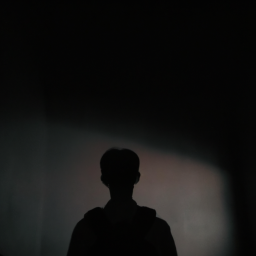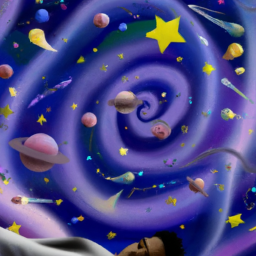As a dreaming artist, I have always been fascinated by the vast potential of dreams. They hold a wide range of visuals, symbols, and emotions that have the power to inspire and guide us in our daily lives. Drawing these dreams can be a powerful way to explore ourselves, promote healing, and enhance creativity.
When we draw our dreams, we are tapping into the unconscious mind – the part of ourselves that is often hidden from view but holds great wisdom and insight. Through art-making, we can bring these deeper parts of ourselves to the surface and gain new perspectives on our lives.
In this article, I will share with you my own process for drawing dreams – from gathering inspiration to exploring symbolism – so that you too can unlock the transformative power of your own subconscious mind.
Key Takeaways
- Dream drawing is a powerful tool for self-discovery, healing, and creativity that taps into the deeper parts of ourselves.
- Choosing the right drawing tools, experimenting with blending and shading, and embracing imperfection are important in creating authentic representations of the subconscious mind.
- Interpreting dream symbols and emotions can provide insight into areas of life that require attention and healing, leading to personal growth and fulfillment.
- Sharing dream drawings can lead to feedback and insights from like-minded individuals, creating a more empathetic and compassionate world.
Understanding the Power of Dream Drawing
Dream drawing is a powerful tool for unlocking the mysteries of your subconscious mind and bringing your innermost thoughts and desires to life on paper. It’s a form of self-expression that allows you to explore the depths of your mind, tap into your creativity, and gain insight into yourself.
When you draw from your dreams, you’re accessing a part of yourself that’s often hidden from view. Exploring your subconscious through dream drawing can bring forth unexpected insights and revelations. By delving deeper into the images that arise in your dreams, you begin to uncover unconscious patterns and symbols that hold meaning for you.
By putting these symbols onto paper, you’re giving them form and substance, making them tangible and accessible. This process can help you understand yourself better, as well as provide guidance for any challenges or decisions in your waking life. Unlocking creativity is another significant benefit of dream drawing.
Engaging with the surreal imagery found in our dreams can spark new ideas and perspectives that we may not have considered before. Drawing from our dreams can also serve as a source of inspiration when we feel stuck or uninspired creatively. It’s an opportunity to let go of expectations or limitations we may place on ourselves in our waking lives and allow ourselves to freely create without judgment.
By exploring subconscious patterns through dream drawing, we can unlock new levels of creativity within ourselves. Gathering inspiration from our dreams can lead us down exciting paths we never thought possible. Let’s take a closer look at how to tap into this creative source by learning how to gather inspiration from our dreams without losing sight of reality.
Gathering Inspiration from Your Dreams
Whilst snoozing, the mind can conjure up all sorts of fascinating scenarios which can be used as a source of inspiration for artistic endeavors. One way to start gathering inspiration from your dreams is through journaling. Writing down your dreams in detail can help you remember them better and also allow you to revisit them later on when looking for creative ideas. Dreams often contain symbolic imagery that can be interpreted in multiple ways, so taking note of these symbols and thinking about their possible meanings can help spark new ideas.
To further delve into the symbolism present in your dreams, it may be helpful to explore dream interpretation. There are many resources available online or in books that offer different interpretations of common dream symbols. However, it’s important to keep in mind that everyone’s subconscious is unique and what a symbol means to one person may differ from its meaning for another. Don’t be afraid to experiment with your own interpretations and let your intuition guide you.
Incorporating elements from your dreams into your artwork can add an extra layer of depth and personal meaning. Using the table below as a starting point, consider jotting down some key themes or symbols from recent dreams that have stood out to you:
| Dream Theme | Possible Artistic Interpretation |
|---|---|
| Flying | Creating abstract paintings with fluid lines |
| Water | Incorporating watercolor techniques into mixed media pieces |
| Animals | Experimenting with animal motifs in jewelry design |
By identifying patterns in your recurring dream themes or noticing specific objects that stand out, you can begin incorporating those elements into your art practice. With this newfound inspiration, it’s time to move onto preparing your materials for bringing these dreamscapes to life!
Preparing Your Materials
As an artist, preparing my materials is like laying the foundation for a building. I carefully choose the right drawing tools that’ll help me express my vision in the most effective way possible.
I also take great care in selecting the right paper or canvas. It can greatly influence the final outcome of my artwork, just as soil quality affects the growth of plants.
Choosing the Right Drawing Tools
Picking the perfect drawing tools can make all the difference in bringing your imagination to life on paper. When exploring mediums, it’s important to experiment with techniques such as blending, shading, and layering. Here are four tips for choosing the right drawing tools:
-
Consider the type of artwork you want to create – Are you going for a realistic or abstract style? Different tools will lend themselves better to specific styles.
-
Think about your skill level – Some drawing tools require more practice and experience than others. It’s important not to get frustrated and give up if a tool doesn’t work out at first.
-
Quality over quantity – It’s better to invest in high-quality tools that will last longer and produce better results than buying a lot of cheaper options that may break or not work well.
-
Personal preference – Ultimately, what feels comfortable in your hand and works best for you is most important.
As I explored different mediums and techniques, I found myself drawn towards certain types of pencils and markers that allowed me to achieve my desired effects. But selecting the right drawing tools is just one step in creating a beautiful piece of art. Next, we’ll delve into selecting the right paper or canvas for your masterpiece.
Selecting the Right Paper or Canvas
To truly bring out the full potential of your artistic skills and unleash your creativity, you need to choose the right paper or canvas that perfectly complements your chosen drawing tools.
Texture and weight considerations play a crucial part in selecting the appropriate medium for your dream drawings. The texture can add depth and dimension to your artwork, while the weight determines how durable it will be over time.
It’s essential to experiment with different mediums when choosing the right paper or canvas for your dream drawings. You can try watercolor papers if you’re using water-based paints, while Bristol boards are perfect for markers and pens.
Remember that each medium has unique properties that interact differently with different papers or canvases. With this in mind, you’ll have a better understanding of which materials work best together, allowing you to create dream drawings that evoke emotions and tell stories.
As we continue our journey on how to draw dreams, let’s now move on to setting the mood for our creative process without losing sight of what we aim to achieve – bringing our wildest imaginations into reality through art.
Setting the Mood for Dream Drawing
As I sit down to draw my dreams, I know that setting the right mood can make all the difference in my creative process.
Creating a calm and relaxing environment is essential for me to fully immerse myself in the task at hand.
Sometimes, I like to use music or meditation as a way to enhance my creativity and access the deepest parts of my imagination.
Creating a Calm and Relaxing Environment
Imagine yourself in a serene setting, where the gentle sound of a trickling stream and the scent of lavender surround you, creating an atmosphere of tranquility.
In order to draw your dreams with ease and precision, it’s important to create a peaceful atmosphere that will allow your mind to relax and let go of any distractions. Here are some ways to incorporate aromatherapy into your environment:
- Light candles or incense that are infused with scents such as lavender, rosemary, or eucalyptus.
- Use essential oils like bergamot or sandalwood in a diffuser to create a calming effect.
- Incorporate natural elements like plants or flowers that have soothing properties.
- Play nature sounds such as rain or ocean waves in the background to help you feel more connected with the environment.
By taking these small steps towards creating a calm and relaxing environment, you’ll be able to connect more deeply with your creative process and bring your dreams onto paper effortlessly.
As you sink deeper into this peaceful state, consider using music or meditation as another tool for enhancing your creativity.
Using Music or Meditation to Enhance Creativity
Enhancing your creativity can be made easier through the use of music or meditation. When it comes to art, finding inspiration and motivation can sometimes be a challenge. That’s where music or meditation come in handy.
Both are powerful tools that can help you tap into your inner self, relax your mind, and unleash your imagination. Meditation has been proven to have numerous benefits, including reducing stress, anxiety, and depression. It also helps increase focus and attention span, which is essential for creating detailed artwork.
Music selection is also crucial when trying to enhance creativity. Choosing instrumental tracks with soothing melodies can help you stay relaxed while still keeping you engaged in the creative process.
By incorporating music or meditation into your daily routine, you will notice a significant improvement in your artistic abilities and overall well-being. With a relaxed mindset and an open heart to creativity, getting started with basic sketching becomes much easier.
Getting Started with Basic Sketching
To start sketching your dreams, all you need is a pencil and some paper. Don’t worry if you’re not an artist – anyone can learn to draw with practice!
Sketching techniques and practicing regularly will help you improve your skills over time. Here are four tips to get started:
-
Start with simple shapes: Begin by drawing basic shapes like circles, squares, and triangles. These building blocks will help you create the foundation for more complex drawings.
-
Use reference images: If you’re struggling to visualize your dream, try looking up images online or in books that relate to your dream theme. This can give you inspiration and help guide your sketch.
-
Experiment with shading: Shading can add depth and dimension to your sketches. Try using different pressures on the pencil or hatching techniques to create shadows and highlights.
-
Don’t be afraid of mistakes: Remember that practice makes perfect, so don’t get discouraged if your sketches don’t turn out exactly how you imagined them. Embrace mistakes as opportunities to learn and grow as an artist.
Once you’ve mastered the basics of sketching, it’s time to add color and texture to bring your dreams to life!
Adding Color and Texture
As an artist, I’ve found that adding color and texture can elevate any sketch to a new level of beauty. Choosing the right color palette is like selecting the perfect outfit for a special occasion. It sets the tone and mood of the piece, conveying emotions and feelings with each stroke.
And just like how different fabrics create unique textures, using varying techniques can add depth and dimension to bring your artwork to life.
Choosing the Right Color Palette
You’ll want to pick colors that resonate with your emotions, bringing your dream to life in a way that feels personal and meaningful. Color psychology plays a significant role in our daily lives, affecting our moods and emotions.
Each color has its symbolism and meaning, representing different things such as growth, passion, or tranquility. When choosing the right color palette for your dream drawing, consider the following sub-lists:
- Think about what emotions you want to convey through the colors you choose.
- Consider using contrasting colors to create depth and interest.
- Look at nature for inspiration – it’s full of beautiful color combinations that can inspire you.
By selecting colors that align with your vision and purpose, you will be able to create an engaging piece of art that speaks volumes about your creative expression. Using these insights into color symbolism and psychology will allow you to tap into the deeper meanings behind each hue while creating something truly unique.
As we move on from discussing the importance of choosing the right colors for your dream drawing, let’s delve further into adding texture to bring more depth and dimensionality into our work.
Using Different Textures to Add Depth and Dimension
Immerse yourself in a world of texture and depth as you explore the different ways to elevate your artwork. Texture blending and layering techniques can transform a flat, two-dimensional drawing into a multi-dimensional masterpiece that captures the essence of your dreams.
Experimenting with mixed media is also key to adding depth and dimension. Incorporating various materials such as paint, charcoal, pastels, or even collage elements can create an intricate interplay of lines, textures, and colors that reflect the layered complexity of our subconscious minds.
Don’t be afraid to mix and match different textures to create contrast and balance within your piece. Remember that art is not just about perfection but also about embracing imperfections and intuition, which we’ll explore further in the next section.
Embracing Imperfection and Intuition
As an artist, I’ve come to realize that embracing imperfection is a key aspect of creating beautiful and meaningful art.
Letting go of perfectionism allows me to trust my intuition and tap into my creativity in new and exciting ways.
When I allow myself to be guided by my inner voice, I’m able to create art that speaks from the heart and resonates with others on a deeper level.
Letting Go of Perfectionism
By embracing imperfections in your dream drawings, you can create a more authentic representation of your subconscious mind. Overcoming perfectionism is crucial when it comes to drawing dreams because it allows you to let go of the need for everything to be flawless and instead embrace the beauty of mistakes.
To illustrate this point, consider the following table:
| Perfectionism | Embracing Mistakes |
|---|---|
| Fear of failure | Willingness to learn |
| Control-oriented | Open-minded |
| Judgmental | Compassionate |
When we strive for perfection in our dream drawings, we often become afraid of making mistakes or taking risks. This fear can lead to a control-oriented mindset where every detail must be perfect, leaving little room for intuition and creativity. However, by embracing mistakes and being willing to learn from them, we open ourselves up to new possibilities and ideas that may have been hidden before. We become more open-minded and compassionate towards ourselves and our art. It is only through this process that we can truly tap into our intuition and creativity without fear or judgment.
Trusting your intuition and creativity is the next step in creating authentic dream drawings.
Trusting Your Intuition and Creativity
You’ll feel more confident and free to express yourself creatively when you trust your intuition in creating your artwork. Trusting your intuition means listening to that inner voice that guides you towards what feels right, even if it doesn’t make logical sense at the time.
There are many benefits to trusting your intuition when drawing dreams, but it can also be challenging. Incorporating personal experiences into your art is one way of tapping into your intuition. When I draw my dreams, I often find myself drawing symbols or images that don’t necessarily have a clear meaning but just feel right for the moment.
It’s important to let go of any preconceived notions about how something should look and instead allow yourself to create freely. Trusting your intuition is not always easy, but doing so can lead to some truly magical results in your drawings.
Now, let’s explore the symbolism in your drawings and see how they relate to different aspects of your life.
Exploring the Symbolism in Your Drawings
As I’m exploring the symbolism in my drawings, I’m reflecting on the deep meaning behind each symbol that appears on paper.
It’s like deciphering a secret code to unlock hidden truths about myself and my innermost desires.
By interpreting my drawings with intuition and insight, I gain a deeper understanding of myself. I can use this knowledge to create positive change in my life.
Reflecting on the Meaning of Your Symbols
When reflecting on the meaning of your symbols, don’t forget to tap into the raw emotions they evoke. Analyzing symbols is not enough, as it’s essential to interpret the emotions that come with them.
Emotions are messengers from our subconscious mind to our conscious awareness. They reveal how we truly feel about something and what we need to work on within ourselves. Interpreting emotions allows us to get closer to understanding the message behind our dreams and gives us a clue as to what areas of our lives require attention and healing.
Don’t ignore negative emotions; instead, embrace them and allow yourself to dive deeper into their roots. Remember that every symbol has a unique meaning depending on the person who drew it.
Reflecting on the meaning of your symbols can be an emotional process, but it’s worth doing so for personal growth and self-awareness purposes. By interpreting your drawings’ emotional content, you can gain insight into what may be holding you back or causing conflict in your life.
The following section will expand upon this idea by discussing how interpreting your drawings can give you further insight into yourself and aid in problem-solving without requiring any particular artistic talent or background knowledge about drawing techniques or symbolism interpretation methods.
Interpreting Your Drawings to Gain Insight
Interpreting your drawings can provide valuable insight into yourself and help you better understand the emotions and experiences that shape your life. When you draw a dream, it’s important to analyze the symbolism within it.
Each symbol represents something unique to you, and by interpreting these symbols, you can gain a deeper understanding of your subconscious mind. It’s common for dreams to contain messages from our subconscious that we may not be aware of in our waking life.
By interpreting these messages through our drawings, we can uncover hidden fears, desires, and motivations that affect our thoughts and actions. Understanding the underlying meaning behind our dream symbols allows us to make positive changes in our lives and work towards personal growth.
So take some time to reflect on your drawings and see what they reveal about your innermost self before moving onto sharing them with others.
Sharing Your Dream Drawings
You can easily share your dream drawings with others by simply taking a photo of them and posting them on social media, where over 3.5 billion people are active users. Sharing techniques can help you get feedback and valuable insights from like-minded individuals who may have had similar dreams or experiences. Finding a community of individuals who are passionate about interpreting their dreams through art can be enriching and fulfilling.
When sharing your dream drawings, it’s important to be open-minded and receptive to feedback. Sometimes, the interpretation of our own dreams can be clouded by personal biases or emotions. By sharing with others, we gain new perspectives that can help us see things in a different light. Plus, finding a supportive community that shares our passion for using art as a tool for understanding our inner selves can be empowering.
Through my own experience in sharing my dream drawings online, I’ve found that it has helped me connect with others on a deeper level. It’s amazing how much we all have in common when it comes to our dreams and the symbols that appear in them. By continuing our journey of exploring our subconscious through art, we not only serve ourselves but also serve those around us by creating a more empathetic and compassionate world.
Continuing Your Dream Drawing Journey
Keep exploring the realm of your subconscious through art and discover new insights about yourself that can lead to personal growth and fulfillment. Drawing your dreams is just one way to tap into this inner world, but there are many other techniques you can use to continue your journey.
Here are some tips for finding inspiration and overcoming creative blocks:
-
Take a walk in nature: The natural world is full of beauty and wonder, and it can be a great source of inspiration when you’re feeling stuck. Go for a hike or simply sit outside and observe the world around you. You may find that nature sparks new ideas and helps you connect with your creativity.
-
Try different mediums: If you’ve been drawing exclusively with pencil or pen, try experimenting with other mediums like paint, charcoal, or pastels. Each medium has its own unique qualities that can help bring your visions to life in different ways.
-
Embrace imperfection: It’s easy to get caught up in making everything perfect, but sometimes the most interesting art comes from embracing mistakes and imperfections. Don’t be afraid to make bold choices or take risks with your artwork even if they don’t turn out exactly as planned, they may lead you down an exciting new path.
By continuing to explore the realm of your subconscious through art, you can gain deeper insights into yourself and the world around you. Finding inspiration and overcoming creative blocks may not always be easy, but by trying new things and embracing imperfection, you’ll open up new possibilities for growth and fulfillment in both your art and your life. So keep creating who knows what wonders await!
Frequently Asked Questions
Can dream drawing help me interpret my dreams better?
Dream drawing can enhance dream interpretation by providing visual representations of subconscious thoughts. Keeping a dream journal and using drawings as a tool for self-discovery can reveal hidden emotions and patterns, leading to personal growth.
How long should I spend on each dream drawing?
Time management is crucial for dream drawing. Give yourself enough time to explore your creative freedom, but don’t get lost in the details. Stay focused on capturing the essence of your dreams and let them guide you towards greater self-awareness.
Is it better to draw dreams from memory or immediately after waking up?
Memory vs. reality: which is more accurate? Drawing from memory can be influenced by our emotions and biases, while drawing upon waking up captures the raw essence of the dream. Both have value in dream interpretation.
How do I deal with negative or scary dreams in my drawings?
When I encounter negative or scary dreams, I focus on dealing with the emotions they bring up. Using symbolism in my drawings allows me to express and process these feelings in a safe and creative way.
Can anyone learn to draw their dreams, or do you need to have artistic talent?
Developing techniques and creative expression are key to drawing dreams. Artistic talent is a bonus but not necessary; we all have the ability to express ourselves creatively. With practice, anyone can learn to draw their unique dreamscapes, using art as a tool for self-discovery and communication.
Conclusion
As I continue on my dream drawing journey, I’m amazed at the power of this practice. It allows me to tap into my subconscious and explore the deepest parts of myself through art.
Each time I sit down with my materials, I feel a sense of excitement and wonder. I don’t know what images will emerge from within.
Through embracing imperfection and intuition, my dream drawings have become a reflection of my innermost thoughts and emotions. They tell a story that is uniquely mine, filled with symbolism that only I can decipher.
Like a kaleidoscope of colors and shapes, each drawing paints a vivid picture of the dreamscape that exists within me.
Dream drawing has become more than just an artistic outlet for me; it’s become a tool for self-discovery and growth. By sharing my drawings with others, I’m able to connect on a deeper level and gain insights into their own unique experiences.
This practice has allowed me to unlock the mysteries of my subconscious mind in ways that I never thought possible.
In conclusion, dream drawing is like diving into an ocean of creativity and exploring the depths below. It’s both exhilarating and challenging, but always rewarding in its own unique way.
Through this practice, we can discover new parts of ourselves while uncovering hidden treasures buried deep within our souls – all through the simple act of putting pen to paper.










